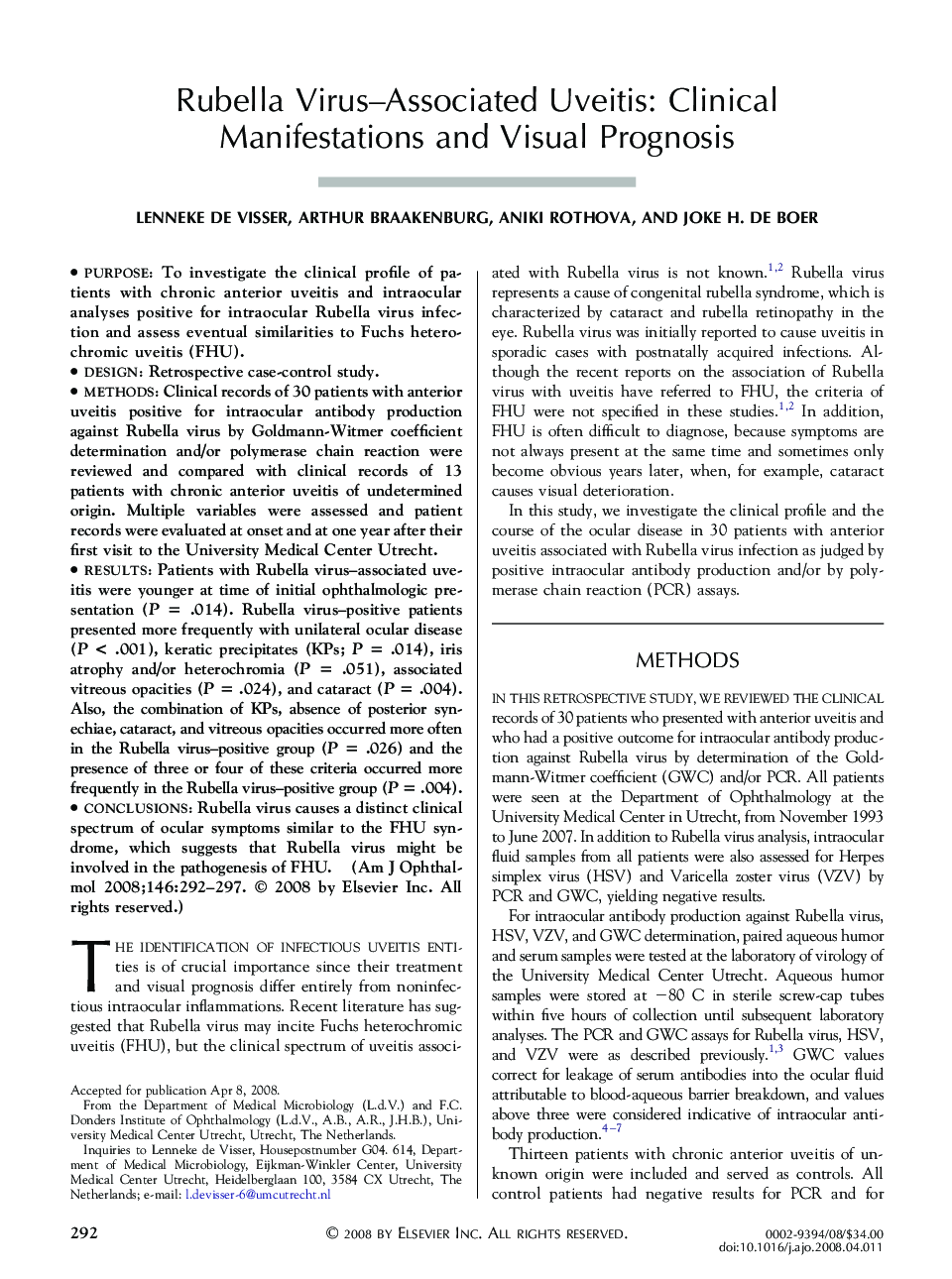| کد مقاله | کد نشریه | سال انتشار | مقاله انگلیسی | نسخه تمام متن |
|---|---|---|---|---|
| 4005074 | 1602206 | 2008 | 6 صفحه PDF | دانلود رایگان |

PurposeTo investigate the clinical profile of patients with chronic anterior uveitis and intraocular analyses positive for intraocular Rubella virus infection and assess eventual similarities to Fuchs heterochromic uveitis (FHU).DesignRetrospective case-control study.MethodsClinical records of 30 patients with anterior uveitis positive for intraocular antibody production against Rubella virus by Goldmann-Witmer coefficient determination and/or polymerase chain reaction were reviewed and compared with clinical records of 13 patients with chronic anterior uveitis of undetermined origin. Multiple variables were assessed and patient records were evaluated at onset and at one year after their first visit to the University Medical Center Utrecht.ResultsPatients with Rubella virus–associated uveitis were younger at time of initial ophthalmologic presentation (P = .014). Rubella virus–positive patients presented more frequently with unilateral ocular disease (P < .001), keratic precipitates (KPs; P = .014), iris atrophy and/or heterochromia (P = .051), associated vitreous opacities (P = .024), and cataract (P = .004). Also, the combination of KPs, absence of posterior synechiae, cataract, and vitreous opacities occurred more often in the Rubella virus–positive group (P = .026) and the presence of three or four of these criteria occurred more frequently in the Rubella virus–positive group (P = .004).ConclusionsRubella virus causes a distinct clinical spectrum of ocular symptoms similar to the FHU syndrome, which suggests that Rubella virus might be involved in the pathogenesis of FHU.
Journal: American Journal of Ophthalmology - Volume 146, Issue 2, August 2008, Pages 292–297